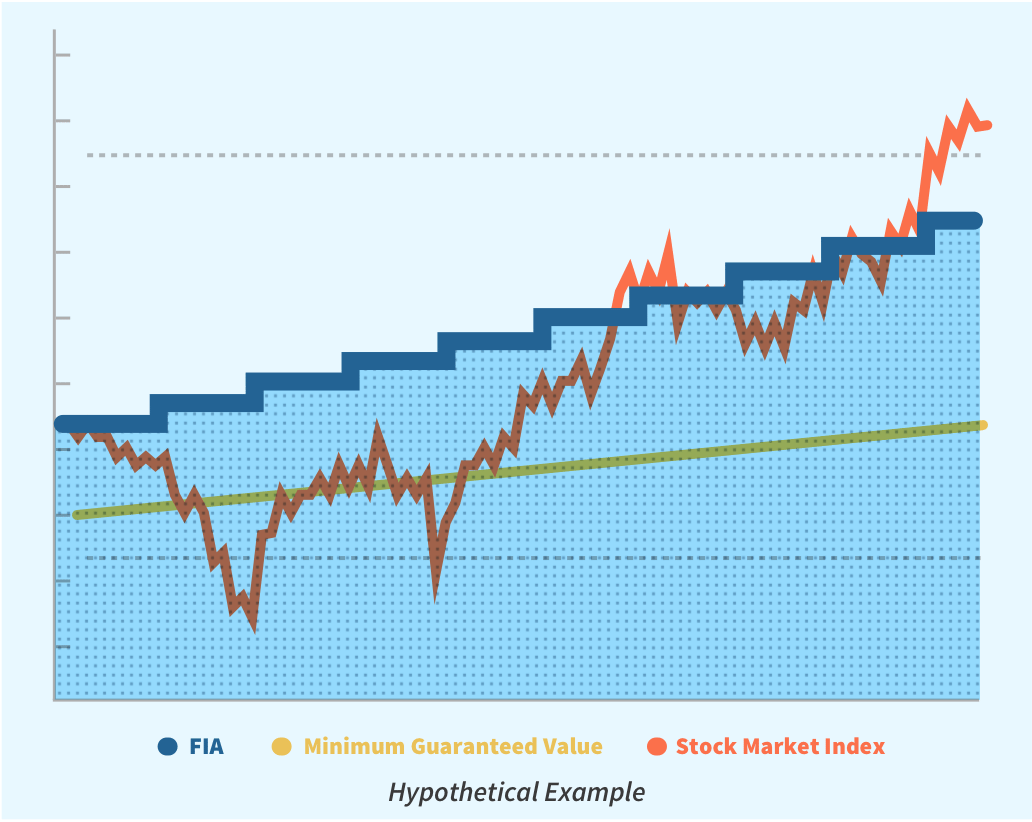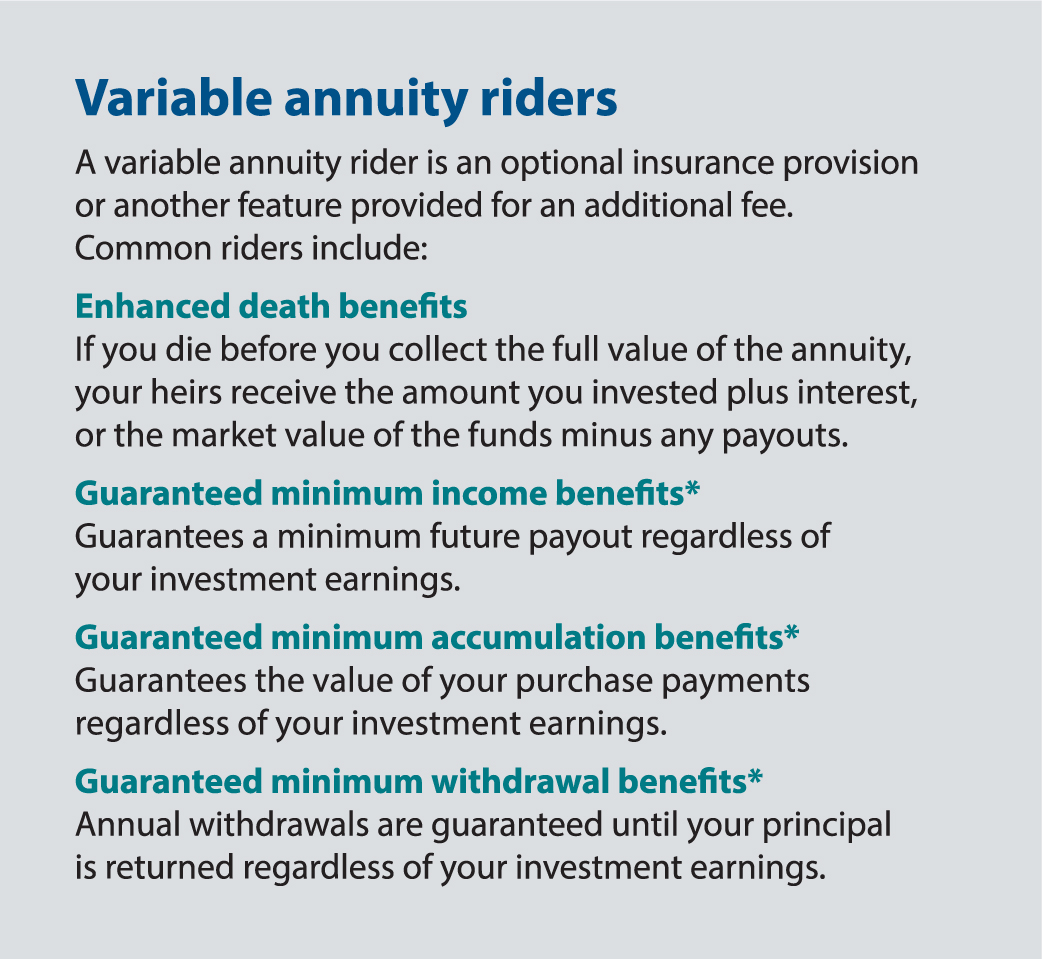All Categories
Featured
Table of Contents
The settlement could be spent for growth for an extended period of timea single premium deferred annuityor spent for a brief time, after which payment beginsa single costs immediate annuity. Single premium annuities are typically moneyed by rollovers or from the sale of an appreciated possession. A flexible costs annuity is an annuity that is planned to be moneyed by a series of settlements.
Owners of dealt with annuities recognize at the time of their purchase what the value of the future capital will be that are created by the annuity. Undoubtedly, the variety of capital can not be understood ahead of time (as this depends upon the contract owner's lifespan), yet the assured, taken care of rate of interest rate at the very least provides the owner some degree of assurance of future revenue from the annuity.
While this difference appears straightforward and uncomplicated, it can considerably influence the worth that a contract proprietor inevitably stems from his/her annuity, and it produces substantial unpredictability for the contract proprietor - Investment options in variable annuities. It also usually has a material impact on the level of costs that a contract owner pays to the releasing insurer
Set annuities are typically made use of by older capitalists who have limited properties however that desire to offset the risk of outliving their properties. Fixed annuities can work as an efficient device for this purpose, though not without certain downsides. For example, when it comes to instant annuities, once an agreement has actually been purchased, the contract proprietor relinquishes any type of and all control over the annuity properties.
Understanding Financial Strategies Key Insights on Annuities Fixed Vs Variable Defining the Right Financial Strategy Benefits of Choosing the Right Financial Plan Why Choosing the Right Financial Strategy Is a Smart Choice How to Compare Different Investment Plans: Simplified Key Differences Between Fixed Indexed Annuity Vs Market-variable Annuity Understanding the Key Features of Long-Term Investments Who Should Consider Fixed Annuity Vs Variable Annuity? Tips for Choosing the Best Investment Strategy FAQs About Fixed Vs Variable Annuity Common Mistakes to Avoid When Choosing a Financial Strategy Financial Planning Simplified: Understanding Your Options A Beginner’s Guide to Smart Investment Decisions A Closer Look at Fixed Interest Annuity Vs Variable Investment Annuity
A contract with a typical 10-year surrender duration would certainly bill a 10% abandonment charge if the contract was given up in the initial year, a 9% abandonment cost in the 2nd year, and so on up until the abandonment charge gets to 0% in the contract's 11th year. Some delayed annuity agreements contain language that enables little withdrawals to be made at different periods during the surrender period without fine, though these allowances commonly come at a price in the type of lower guaranteed interest rates.
Equally as with a taken care of annuity, the owner of a variable annuity pays an insurance coverage company a round figure or collection of repayments for the pledge of a series of future payments in return. But as discussed above, while a repaired annuity grows at a guaranteed, consistent rate, a variable annuity expands at a variable rate that depends upon the efficiency of the underlying financial investments, called sub-accounts.
Throughout the buildup stage, assets bought variable annuity sub-accounts expand on a tax-deferred basis and are exhausted only when the agreement owner withdraws those incomes from the account. After the accumulation phase comes the revenue stage. With time, variable annuity possessions ought to in theory boost in worth until the contract owner determines he or she wish to begin withdrawing cash from the account.
One of the most substantial issue that variable annuities typically existing is high expense. Variable annuities have a number of layers of charges and expenses that can, in accumulation, produce a drag of up to 3-4% of the contract's value each year. Below are one of the most common costs associated with variable annuities. This expense compensates the insurer for the threat that it thinks under the terms of the agreement.
M&E cost fees are determined as a percent of the agreement worth Annuity issuers pass on recordkeeping and various other administrative expenses to the contract owner. This can be in the form of a level annual cost or a percentage of the contract worth. Administrative costs might be consisted of as component of the M&E risk fee or may be analyzed independently.
These costs can vary from 0.1% for passive funds to 1.5% or even more for proactively managed funds. Annuity contracts can be customized in a number of methods to offer the specific requirements of the contract proprietor. Some usual variable annuity motorcyclists consist of ensured minimum build-up benefit (GMAB), assured minimum withdrawal benefit (GMWB), and ensured minimal income advantage (GMIB).
Analyzing Variable Annuity Vs Fixed Indexed Annuity A Closer Look at How Retirement Planning Works What Is the Best Retirement Option? Features of Smart Investment Choices Why Choosing the Right Financial Strategy Can Impact Your Future Fixed Annuity Vs Variable Annuity: Explained in Detail Key Differences Between Different Financial Strategies Understanding the Key Features of Variable Vs Fixed Annuities Who Should Consider Fixed Vs Variable Annuity Pros Cons? Tips for Choosing Fixed Interest Annuity Vs Variable Investment Annuity FAQs About Variable Vs Fixed Annuities Common Mistakes to Avoid When Planning Your Retirement Financial Planning Simplified: Understanding Your Options A Beginner’s Guide to Smart Investment Decisions A Closer Look at Fixed Income Annuity Vs Variable Growth Annuity
Variable annuity contributions give no such tax obligation deduction. Variable annuities have a tendency to be highly ineffective vehicles for passing wealth to the future generation because they do not take pleasure in a cost-basis modification when the original agreement proprietor dies. When the proprietor of a taxed investment account dies, the expense bases of the financial investments kept in the account are readjusted to show the market rates of those investments at the time of the owner's fatality.
For that reason, heirs can inherit a taxed investment profile with a "fresh start" from a tax obligation point of view. Such is not the case with variable annuities. Investments held within a variable annuity do not obtain a cost-basis change when the original owner of the annuity dies. This suggests that any type of collected unrealized gains will be handed down to the annuity owner's successors, in addition to the linked tax obligation burden.

One significant concern connected to variable annuities is the possibility for disputes of interest that might feed on the component of annuity salesmen. Unlike an economic expert, that has a fiduciary duty to make financial investment choices that benefit the customer, an insurance policy broker has no such fiduciary obligation. Annuity sales are extremely lucrative for the insurance experts who sell them as a result of high in advance sales compensations.
Several variable annuity contracts contain language which places a cap on the percent of gain that can be experienced by specific sub-accounts. These caps prevent the annuity proprietor from completely joining a section of gains that could or else be appreciated in years in which markets create considerable returns. From an outsider's point of view, it would certainly seem that capitalists are trading a cap on financial investment returns for the aforementioned assured flooring on financial investment returns.
Decoding Fixed Income Annuity Vs Variable Growth Annuity Key Insights on Fixed Indexed Annuity Vs Market-variable Annuity Defining Fixed Vs Variable Annuity Pros Cons Pros and Cons of Fixed Vs Variable Annuities Why Choosing the Right Financial Strategy Matters for Retirement Planning How to Compare Different Investment Plans: Simplified Key Differences Between Fixed Annuity Vs Equity-linked Variable Annuity Understanding the Key Features of Variable Annuities Vs Fixed Annuities Who Should Consider Fixed Index Annuity Vs Variable Annuities? Tips for Choosing Fixed Index Annuity Vs Variable Annuity FAQs About Planning Your Financial Future Common Mistakes to Avoid When Planning Your Retirement Financial Planning Simplified: Understanding Fixed Vs Variable Annuity Pros Cons A Beginner’s Guide to Smart Investment Decisions A Closer Look at How to Build a Retirement Plan
As noted over, give up fees can seriously restrict an annuity proprietor's ability to relocate possessions out of an annuity in the early years of the agreement. Better, while many variable annuities allow agreement proprietors to withdraw a defined amount during the buildup stage, withdrawals yet quantity typically lead to a company-imposed charge.
Withdrawals made from a set passion rate investment choice could additionally experience a "market price change" or MVA. An MVA readjusts the worth of the withdrawal to reflect any type of changes in rates of interest from the time that the money was bought the fixed-rate choice to the moment that it was taken out.

Fairly commonly, even the salesmen who offer them do not fully understand exactly how they work, therefore salesmen often exploit a customer's feelings to offer variable annuities instead of the merits and suitability of the products themselves. Our team believe that financiers should fully comprehend what they have and how much they are paying to have it.
However, the same can not be claimed for variable annuity possessions kept in fixed-rate financial investments. These properties legitimately come from the insurer and would certainly as a result be at risk if the firm were to fall short. Similarly, any type of guarantees that the insurance provider has actually accepted supply, such as an ensured minimum earnings advantage, would certainly be in question in case of an organization failing.
Decoding How Investment Plans Work Key Insights on Your Financial Future Defining the Right Financial Strategy Benefits of Tax Benefits Of Fixed Vs Variable Annuities Why Choosing the Right Financial Strategy Matters for Retirement Planning How to Compare Different Investment Plans: A Complete Overview Key Differences Between Different Financial Strategies Understanding the Rewards of What Is A Variable Annuity Vs A Fixed Annuity Who Should Consider Fixed Indexed Annuity Vs Market-variable Annuity? Tips for Choosing the Best Investment Strategy FAQs About Planning Your Financial Future Common Mistakes to Avoid When Planning Your Retirement Financial Planning Simplified: Understanding Your Options A Beginner’s Guide to Smart Investment Decisions A Closer Look at How to Build a Retirement Plan
Possible buyers of variable annuities should recognize and consider the monetary condition of the issuing insurance policy business prior to getting in into an annuity agreement. While the benefits and drawbacks of numerous kinds of annuities can be disputed, the genuine problem surrounding annuities is that of suitability.
Besides, as the saying goes: "Caveat emptor!" This article is prepared by Pekin Hardy Strauss, Inc. ("Pekin Hardy," dba Pekin Hardy Strauss Wide Range Administration) for educational purposes just and is not meant as an offer or solicitation for company. The information and information in this post does not comprise legal, tax obligation, bookkeeping, financial investment, or other professional recommendations.
Table of Contents
Latest Posts
Understanding Retirement Income Fixed Vs Variable Annuity A Comprehensive Guide to Variable Vs Fixed Annuities Breaking Down the Basics of Investment Plans Features of Smart Investment Choices Why Fix
Breaking Down Fixed Vs Variable Annuity Everything You Need to Know About Fixed Indexed Annuity Vs Market-variable Annuity What Is the Best Retirement Option? Pros and Cons of Various Financial Option
Understanding Fixed Annuity Vs Equity-linked Variable Annuity Key Insights on Your Financial Future Defining Annuities Fixed Vs Variable Pros and Cons of Annuity Fixed Vs Variable Why Variable Annuity
More
Latest Posts